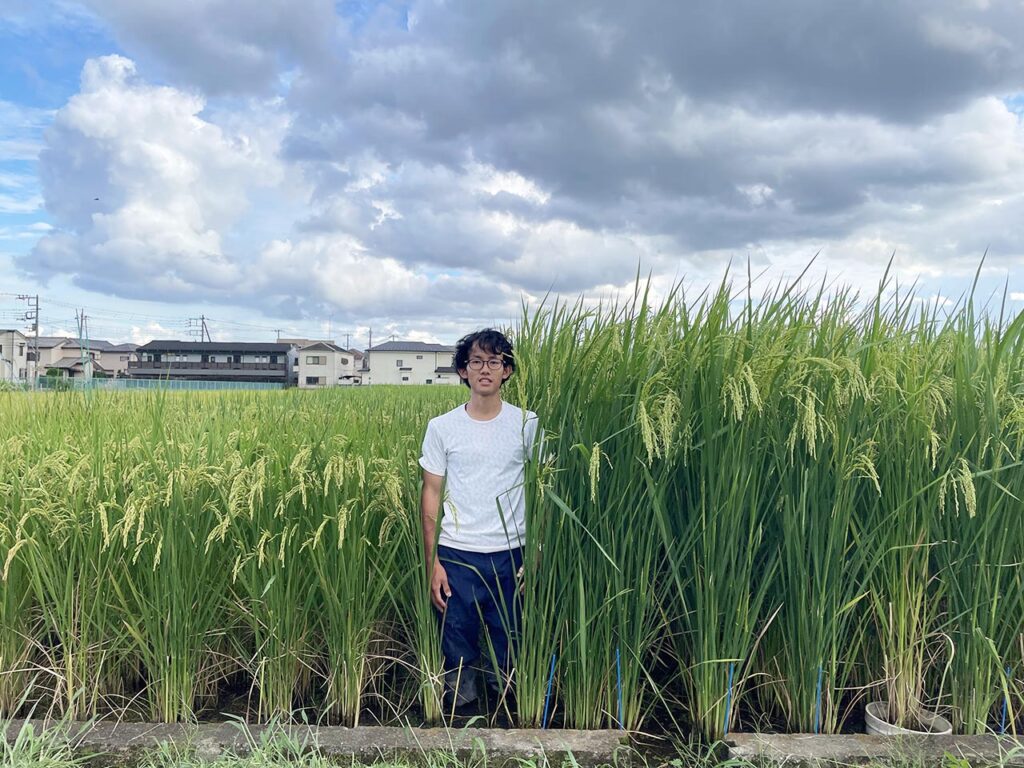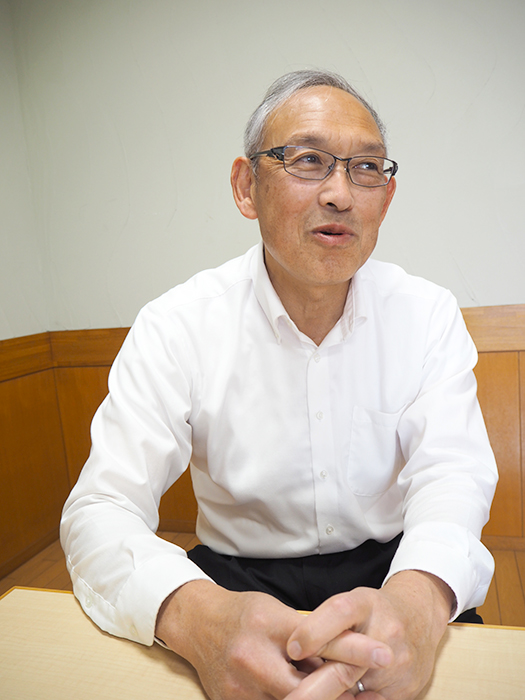[Cultivating the future with carbon farming] We are entering an era where we can "grow" materials and fuels as well
Updated by Masafumi Yohda on June 30, 2025, 3:46 PM JST
Masafumi YOHDA
Tokyo University of Agriculture and Technology
D. degree in Chemical Engineering from the University of Tokyo. After working as a researcher at Asahi Glass Central Research Laboratory, a full-time researcher at RIKEN, and an associate professor at the Faculty of Engineering, Tokyo University of Agriculture and Technology, he became a professor at the Graduate School of Engineering, TUAT in 2003. He has been a Distinguished Professor at the Graduate School of Engineering of TUAT since April 2025, and is a project leader of the "Carbon Cultivation Center for Challenging the Limits of Carbon Negativity" (FY2023-FY2032) under the JST COI-NEXT (Co-creation Opportunity Formation Support Program). His specialties include structure-function research of proteins called molecular chaperones and development of gene analysis technology.
Click here to read the previous article.
Cultivating the Future through Carbon Cultivation] What is the idea of "making" to save the earth?
To stop global warming, we need to rethink how we use carbon.
The Tokyo University of Agriculture and Technology (TUAT), a center of the Japan Science and Technology Agency (JST) "Co-Creation Opportunity Formation Support Program (COI-NEXT)," is conducting a research and development project based on a new concept of "cultivating" and producing not only food, but also fuel and materials.
An interview with Masafumi Yohda, project leader and professor-at-large at the University of Agriculture and Technology. In the second part of the interview, we asked him about the research and technology development efforts actually underway and the significance of tackling the challenge of realizing a "carbon-cultivated society" in Japan.
(Interviewer, composition by Momoko Suda)
--What are the main research and technological developments in your project to achieve a -carbon arable society?
As I have already mentioned, Japan has a limited amount of farmland, imports a considerable amount of food from overseas, and has limited fossil resources. What can Japan do when it comes to the need to produce a lot of biomass? The first three that come to mind are rice cultivation, forests, and algae, so I am focusing my research on these three.
--What specific research is being conducted on rice cultivation?
For example, the University of Agriculture and Technology is developing a new rice variety called "Monster Rice.
Conventional rice varieties have been bred not to grow too large and to produce a certain amount of production so that they do not easily fall over due to wind or other factors. Monster rice is nearly twice as tall as regular rice, growing up to 1.8 meters tall. The leaves and stems are also large, with a very high carbon fixation rate, as well as being hardy and resistant to collapse.
Of course, it also comes with ears and is edible, making it useful for emergency preparedness. The rice has a refreshing texture, so it may be good for fried rice, etc.

--So you normally use rice straw and rice husks, including the rice straw and rice husk parts, as materials and fuel, while also providing food security. What do you do with rice straw and other materials in normal rice cultivation?
The common practice is to strain it into rice paddies, but this creates the problem of methane emissions. Methane, like carbon dioxide (CO2), is a greenhouse gas, so methane production must also be prevented. As one countermeasure, a start-up company from the University of Agriculture and Technology has developed an automated robot that floats on water called an "Aigamorobo. The robot is being introduced on Iriomote Island in Okinawa Prefecture and elsewhere.
--What about forests?
Japan has abundant forests, which cover approximately 70% of the country, and they fix a large amount of CO2. However, there are many "aged forests" that have been left unmanaged, and their capacity to fix carbon is decreasing rapidly.
The forest industry is also in decline, and all but those used for lumber and paper have been abandoned. This means that the carbon that has been fixed is not being used properly.
In the first place, it takes decades for newly planted trees to become saleable as timber, so even if young people plant trees, they will be old men by the time they are profitable. It is also difficult to manage the trees to make them thick and long enough to be suitable for building materials. These are the fundamental problems facing the forest industry.
Therefore, we are considering planting "fast-growing trees," or trees that grow quickly. For example, trees such as eucalyptus and Japanese knotweed stop growing after about 10 years and can be utilized.
As a side note, the eating of shoots by an overabundance of deer is now also a problem in forests. Eucalyptus may be able to prevent this damage because it grows large before the shoots are eaten up.
Finally, regarding algae, since Japan is surrounded by the sea, we are exploring the possibility of cultivation using the sea surface. Along with mass cultivation technology for this purpose, we are also developing algae that can produce oil.
--You are not only producing biomass, but you are also conducting research to use it for materials and other purposes, aren't you?
Yes, the majority of carbon is fixed in plants. Most of the carbon fixed by plants is contained in "cellulose," a polymer (a polymer with a repeating structure) made up of glucose. When biomass is used as a material, cellulose is generally broken down into glucose, which is then fermented and converted into various compounds. However, cellulose has a structure that is difficult to break down, so a great deal of energy is required to break it down.
We are also looking at ways to process cellulose into materials such as paper pulp and plastic, rather than decomposing it.
With respect to rice, for example, one of our member companies is mixing rice and plastic to create a new material. By mixing rice instead of breaking it down, the rice can be efficiently converted into materials without wasteful processes.
We are developing technologies that can efficiently convert the biomass we create into materials in those various ways.

--You mean the technology to improve "carbon efficiency" that was discussed in the first part of the article.
That's right. How much of the carbon fixed by photosynthesis remains fixed as a product? The higher this ratio, the more significant it is as "carbon cultivation" and the smaller the environmental impact.
The same is true for energy. Take, for example, the case of bioethanol production from sugarcane. Fermenting sugarcane produces more than 10% ethanol, but it cannot be used as is, so it must be distilled. Distillation still requires energy.
The reason why it is said to be "carbon neutral" even though it consumes energy is because the sugarcane waste from the sugar production process is burned during distillation to produce energy. However, carbon fixed by photosynthesis is used there, so even though it is carbon neutral, it means that carbon is being wasted.
It is important to reduce such waste as much as possible.
--Finally, please tell us about the significance of promoting this research in Japan.
Up until now, biomass-related industries have been conducted mainly in places such as the United States and Brazil, where agricultural production is thriving. However, in these places, there is an abundance of biomass as raw material, but there is also a lot of waste in the utilization of biomass, as I mentioned earlier.
On the other hand, Japan produces very little biomass and has not yet established itself as an industry. This may appear to be a weakness, but there is demand for it because energy resources are limited, and because it has not yet been industrialized, there is a high degree of freedom. In this sense, I believe that Japan is well suited to develop technologies for highly efficient and waste-free biomass production and utilization, and in fact, has the potential to lead the world.
Momoko Suda(Momoko Suda)
Science Journalist / Specially Appointed Professor at Tokyo University of Agriculture and Technology. In charge of outreach activities at the Carbon Tillage Center. After working for Mainichi Shimbun and NewsPicks, he became independent in November 2024, and received the Investigative Reporting Award Incentive Award, among others, for his September 2023 NewsPicks feature "The False Unicorn: The Dark Side of the Nematode Cancer Test. He is the author of "Fake Scientists: The STAP Cell Case" (Bungeishunju, the Oya Soichi Nonfiction Prize and the Science Journalist Grand Prize) and "The Impact of Synthetic Biology. He is also the co-author of "Who Kills Science: The Impact of the Collapse of a Nation Based on Science and Technology" (Mainichi Newspaper Publishing, Science Journalist Award).